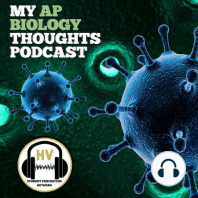11 min listen
Endotherms and Ectotherms
ratings:
Length:
6 minutes
Released:
Feb 15, 2021
Format:
Podcast episode
Description
My AP Biology ThoughtsUnit 8 Episode #25Welcome to My AP Biology Thoughts podcast, my name is Helena and I am your host for episode #25 called Unit 8 Ecology: endotherms and ectotherms. Today we will be discussing the difference between endotherms and ectotherms. Segment 1: Introduction to endotherms and ectothermsEndotherms are organisms that use internally generated heat to maintain body temperature. They typically keep a steady body temperature regardless of their environment due a process called homeostasis. Homeostasis, which are mechanisms like shivering and sweating, keeps an endotherm's internal temperature steady. On the other hand, Ectotherms are organisms that mainly depend on external heat sources in order to regulate their body temperature. Their body temperature fluctuates based on their surrounding environment’s temperature. Their regulation methods include seeking sun when they need heat and shade when they need to cool down. Unlike endotherms, they are able to survive off of a range of body temperatures instead of needing to maintain a set temperature. Since ectotherms use outside sources for heat, they are able to eat much less food than endotherms. Ectotherms have a much lower metabolic rate than endotherms because they use a lot less internal energy to regulate their body temperature. About 50% of ectotherms food energy is used for growth and reproduction, while endotherms use most of their food energy during metabolism to maintain their body temperature. This is why endotherms require 5 to 20 times more food than an ectotherm of the same size. Segment 2: Example of Endotherms and Ectotherms Weather with a t-shirt on, just like every endotherm, you would start shivering. That is unless you are some kind of superhero. On the other hand, if heat generation exceeds heat loss, regulating mechanisms will increase heat loss. So if you were in Florida during August with a winter coat on you would start perspiring, or if you were a very hot dog you would start panting. Now onto Ectotherms, these are the organisms known as “cold-blooded animals”. Ectotherms include most fish, amphibians, reptiles, and invertebrates. When an ectotherm needs to increase its body temperature, it will seek out heat sources. For example, an alligator will bath in the sun, or a lizard will sit on hot pavement. On the other hand, when ectotherms need to cool off, they will seek out shade. For example, a lizard might go hang out under a shaded rock. However, some ectotherms regulate their body temperature by living in environments that have fairly constant conditions. These include a lot of marine invertebrates, who live in aquatic conditions that fluctuate very little, so they don’t have to seek out heat or cooling sources. Their body temperature matches that of the surrounding water. Segment 3: Digging Deeper Endotherms and Ectotherms. So after learning all of this about ectotherms and endotherms, you might be wondering why organisms need to regulate their body temperature? Well the simple answer is that they would die if they didn’t. When cells are as cold as water’s freezing point crystals will form inside of them, which will most likely cause the cells membrane to rupture. On the other side, when the body gets too hot (above 104 degrees Fahrenheit)...
Released:
Feb 15, 2021
Format:
Podcast episode
Titles in the series (100)
Darwin’s Early Life by My AP Biology Thoughts
